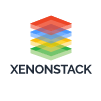Internet of Things (IoT) Benefits, Tools and Applications
What is the Internet of Things (IoT)?
Internet of Things (IoT) connected using the Internet capable of sending the data to the Cloud. The stuff in IoT equipped with different sensors which have their role to interact with the physical object and collect information from that.
How IoT Works?
The things in IoT equipped with different sensors which role to interact with the physical object and collect information from that. A single device may have fitted with multiple sensors.
IoT devices are configured to push the sensor data to the Cloud where anybody can perform the required transformation and analytics.
Internet of Things Benefits
- IoT devices can be used to implement Smart Home.
- IoT devices used for monitoring the things in the industrial sector.
- IoT can be used to collect data from different devices and generating alerts in case of any threshold.
- Intelligence Industries.
- In healthcare, IoT can be used to monitor patients remotely and do the needful treatment from the remote location.
Why Adopting Internet of Things Matters?
The growth in the use of IoT devices is changing the lifestyle, personal health, habits, environment, and industries across different sectors. IoT is enabling to capture the physical data and applying separate analytics on the bases of the collected data. IoT has made the life very easy in various fields such as Healthcare, Industrial Sector, Home Automation, Environmental Monitoring, and Retail.
How to Adopt Internet of Things (IoT) ?
IoT plays a different role in each sector; the only common thing is that it enables to the connect the physical devices to the Cloud.
Healthcare System — In Healthcare, IoT can be used to monitor a patient’s heart rate or blood pressure. It can generate an alert to notify the doctor, so that doctor can guide to take the immediate decisions. In hospitals, it can also help in Assets Management and configuring or tuning of any device from a remote location.
Industrial — Industrial IoT can be used to monitor the assets in the industrial sector. It can help in implementing Predictive Maintenance to minimize the loss in case of any failure. IoT could help to trigger the alert if any of the machine parts serviced in Real-Time which can be replaced and prevent the massive loss.
Home Automation — There are lots of IoT devices available which used in Home Automation/Security. IoT used for smart monitoring of the home appliances which includes door sensors, cameras, smoke or fire detector, smart electric devices.
Environmental Monitoring — When it comes to monitoring of the environment, IoT devices can be used to collect the data in Real-Time from the sensors and that data can be used for the forecasting.
Retail — In the Retail sector, IoT can help the retailers to upgrade the stores which can provide a better experience the customers and also helps in theft prevention and analytics on the based of sales.
Best Practices for Implementing IoT
The most important thing while deploying an IoT solution is to take care of the security. When everything exposed to the internet, there may be a possibility of breach into the system which can help the hackers to misuse the devices.
Network Security — First of all, the person/organization who is implementing IoT need to secure their network on which all the IoT devices connected. Take an example of home automation: when someone has to implement home automation, he should keep the network secret, and he must use proper encryption technic if using Wi-Fi network and must use appropriate authentication and access control to access the network.
Device Security — Other than the network, device-level security is needed which can prevent the unauthorized access of the devices. Select the device manufacturer wisely which provides security patches after an interval.
Data Security — After the network and device everyone must secure the database or data warehouse where they are storing their data, collected from IoT devices.
Top Internet of Things (IoT) Tools
Ingestion Tools
Apache MiNiFi — Apache MiNiFi is the sub-project of Apache NiFi which can be used to collect data from IoT devices. Apache MiNiFi is of very size and capability to run on small devices which consumes meager resources.
StreamSets Data Collector Edge — SDC edge is a very lightweight agent which is capable of collecting the data from its source of creation.
Cloud Platform
AWS IoT Core is managed Cloud platform by AWS which enables the secure connection between different connected devices(sensor) and multiple Cloud services. AWS IoT Core enables to handle billions of devices and trillion of messages. It also helps to route those message to different AWS Cloud services and allows the building of analytics and machine learning models.
Cloud IoT core is the managed service of Google which allows as to quickly and securely connect, control and ingest data from million of IoT devices. It also enables to communicate with other Google Cloud Service for collecting, processing, analyzing and visualizing the data. Cloud IoT core is a serverless service which automatically scales in response to Real-Time events. It supports both HTTP and MQTT protocols of the communication with the IoT devices.
In Azure, IoT Hub acts as the central unit which allows connecting, monitor and manages millions of devices using bi-directional messaging. It supports AMQP, MQTT, HTTP protocols for the communication with the IoT devices. It also helps there own protocol gateway Azure IoT Protocol Gateway in case a device doesn’t support AMQP, MQTT, HTTP.
Originally published at https://www.xenonstack.com on October 26, 2018.
